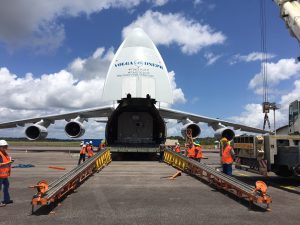

Horizons 3e is owned by a joint venture between Intelsat and SKY Perfect JSAT Corporation, marking the fourth satellite project between the two companies. Built by Boeing and based on the award-winning Intelsat EpicNG design, Horizons 3e marks the sixth of Intelsat EpicNG high throughput satellites (HTS).
The satellite will complete Intelsat EpicNG’s global coverage and provide wireless operator, mobility and government customers with unmatched performance, resiliency and redundancy.
Horizons 3e is the first Intelsat EpicNG satellite to feature entire Ku-band spot beams utilising multiport amplifiers that optimise power across the satellite. This enhanced, advanced digital payload features the highest throughput of the entire Intelsat EpicNG fleet with full beam interconnectivity in two commercial bands and significant upgrades on power, efficiency and coverage flexibility. With the multiport amplifier, power can be adjusted to each beam to meet customer throughput demands.
By matching satellite power usage to traffic demands, aeronautical and maritime mobility, fixed and wireless network operators, corporate enterprise and government customers can leverage the additional efficiency improvements to expand their network and applications across the Asia Pacific region.
In addition to the power sharing technology, Horizons 3e provides additional resiliency to the IntelsatOne Flex managed service platform, for use in enterprise and mobility applications.
Horizons 3e is currently scheduled for launch on 7 September, 2018 during a window that is currently scheduled to open at 5:56 pm EDT and closes at 6:31 pm EDT. Following a successful launch, Horizons 3e will be placed at the 169° East orbital location, where it will undergo in-orbit testing prior to its expected in-service date in the first quarter of 2019.







